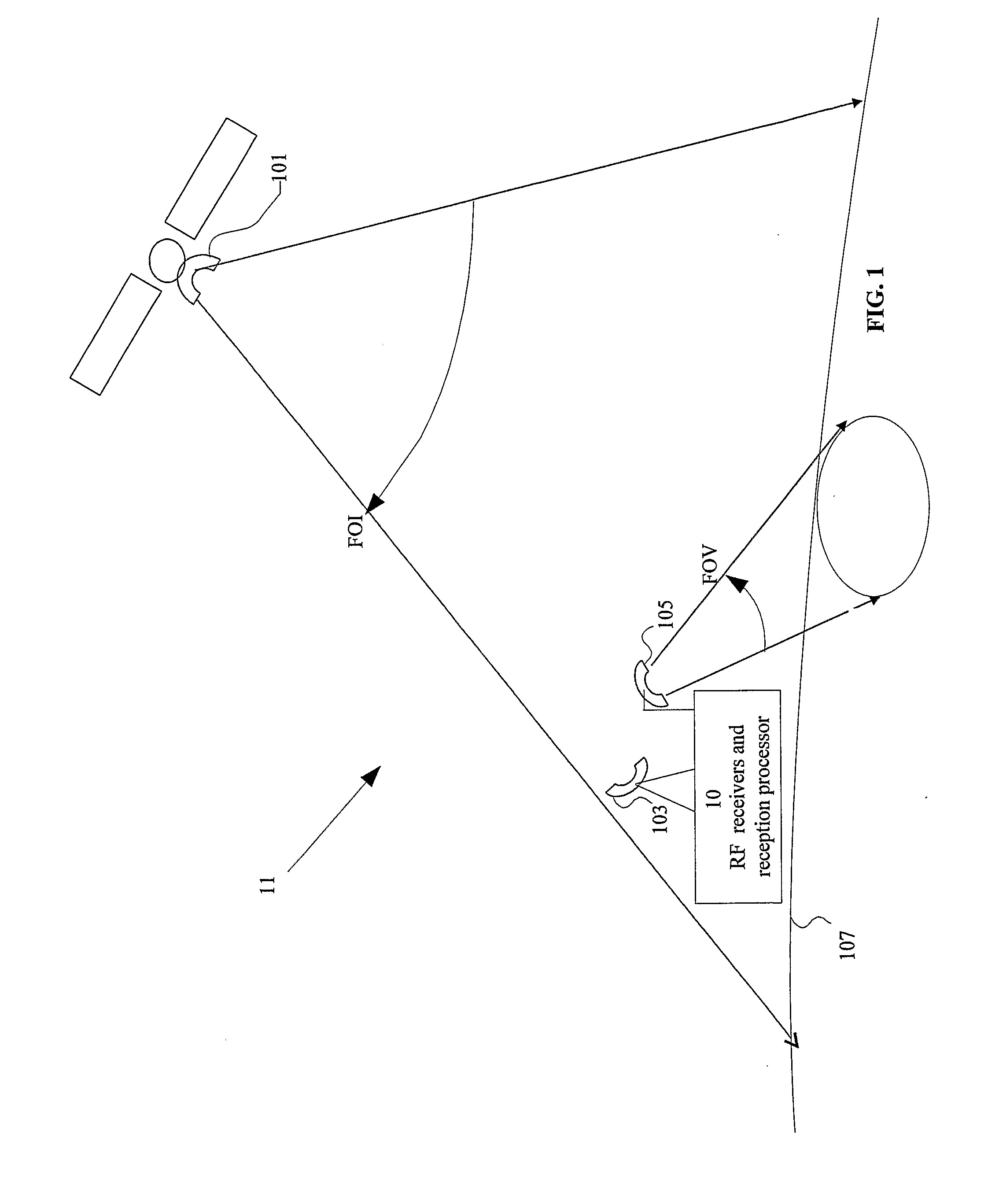Passive Radar Utilizing Space-Borne Digital Electromagnetic Illuminators
a technology of digital electromagnetic illuminators and passive radars, applied in the field of radar systems, can solve the problems of low effective radiated power, operator's inability to control the availability of illuminators, and reliance on third-party transmitters
- Summary
- Abstract
- Description
- Claims
- Application Information
AI Technical Summary
Problems solved by technology
Method used
Image
Examples
examples
2.1 SAR
Cooled T<400 k;
Un-cooled T<600 k;
Assuming
[0048]sas0≈1
we get:
vt*R*(S / N)σ<C1={108(cooled);7*107(un-cooled);
Detection by Fixed System (Radial Constant Mutual Velocity):
[0049]Radial movements are processed by simple Doppler processing. in this case the duration of a target within each range bin must be longer than the duration of the essential coherent integration. The width of a range bin is given by:
δr≈c2*W0
The radial component of the velocity is vr and the transition time is:
Tt=δrvr=c2*W0*vr
Resulting in a condition on maximal velocity:
T≤c2*W0*vr=Ttorvr≤c2*QD;
The coherent processing gain is calculated as before according to:
QD=2*π*k*TI*SN*ɛeσt*θ2;
And after some manipulations:
vr*R2σ<c*I*sa*ɛe2*π*k*T*SN
2.3. Fixed Ground System (Un-Cooled)
[0050]The calculation here is done as follows: QD is determined from the ratio c / v, QD and the wanted S / N dictates the minimal possible 0 to calculate maximal range Rmax
Antenna of 1 sq.m, S / N=6 db:
[0051]Maximal range for:
Pedestrian: RCS=1 ...
PUM
 Login to View More
Login to View More Abstract
Description
Claims
Application Information
 Login to View More
Login to View More - R&D
- Intellectual Property
- Life Sciences
- Materials
- Tech Scout
- Unparalleled Data Quality
- Higher Quality Content
- 60% Fewer Hallucinations
Browse by: Latest US Patents, China's latest patents, Technical Efficacy Thesaurus, Application Domain, Technology Topic, Popular Technical Reports.
© 2025 PatSnap. All rights reserved.Legal|Privacy policy|Modern Slavery Act Transparency Statement|Sitemap|About US| Contact US: help@patsnap.com



